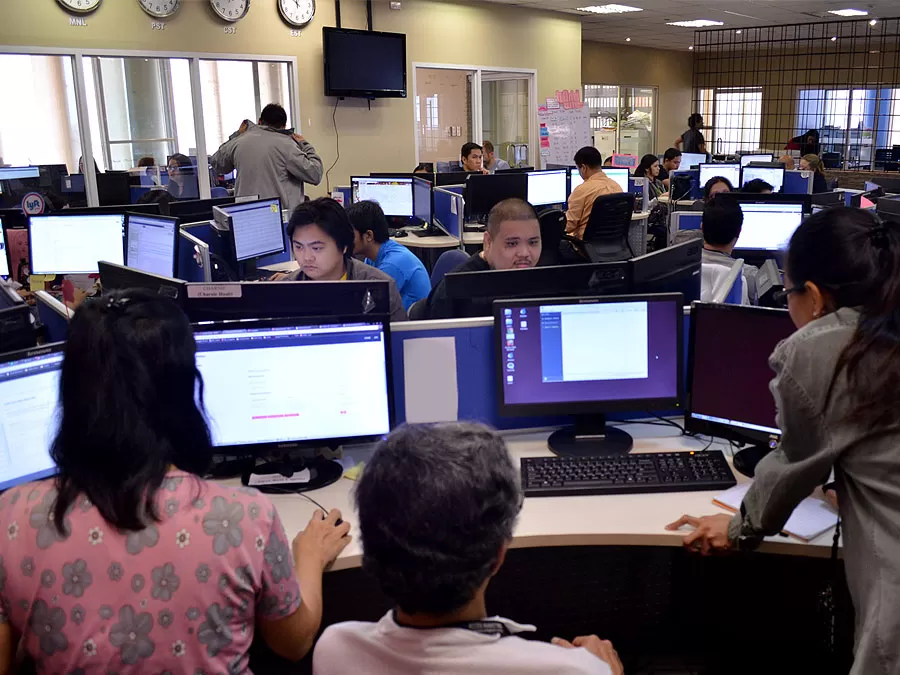To better achieve customer satisfaction, call centers need to have all hands on deck. Here’s how workforce forecasting helps with that goal.
The seamless alignment between the call center workforce and customer demand forms the crux of this symphony, with each note resonating in harmony to create an experience that transcends expectations. Let’s take a look at how workforce forecasting can help in ensuring customer satisfaction.
Understanding Workforce Forecasting
In the dynamic realm of call center operations, the bedrock of efficiency and customer satisfaction is intricately woven with the art and science of workforce forecasting.
This pivotal discipline serves as the compass that navigates the ever-shifting tides of customer demand, guiding the strategic decisions that shape staffing levels, employee scheduling, and resource allocation.
The symphony of workforce forecasting is a harmonious fusion of historical data analysis, demand forecasting, and the transformative potential of cutting-edge technologies like predictive analytics and machine learning.
At the epicenter of workforce forecasting lies its predictive prowess—an ability honed to anticipate customer demand with a finesse that borders on prescience. This anticipatory acumen becomes the linchpin that informs staffing decisions, ensuring that the call center is equipped with the optimal number of agents to address fluctuating customer inquiries.
The delicate balance between overstaffing and understaffing is gracefully calibrated, preventing resource wastage and guaranteeing that customer needs are met with a timely and efficient response.
The compass of workforce forecasting extends beyond staffing decisions, encompassing the intricate choreography of employee scheduling and resource allocation. By deciphering the patterns of customer demand, businesses strategically deploy their workforce to align with peak and off-peak hours.
Key Elements of Effective Workforce Forecasting
Effective workforce forecasting forms the cornerstone of a call center’s ability to navigate the dynamic landscape of customer demand. Rooted in the realm of data analysis, this strategic discipline leverages a spectrum of insights to sculpt staffing strategies that harmonize with the ever-shifting rhythms of customer inquiries.
Historical Data Unveiling Patterns
At the heart of effective workforce forecasting resides the potency of historical data analysis. This reservoir of past interactions serves as a compass that guides call centers through the labyrinth of customer inquiries.
By meticulously examining historical call volumes, businesses unlock patterns that reveal the rise and fall of customer interactions. This historical retrospective acts as a compass, guiding call centers to anticipate the peaks and troughs of call volume with a precision that minimizes wait times and maximizes agent utilization.
External Factors Shaping Call Volume
Effective workforce forecasting does not unfold in isolation. External factors wield their influence on the contours of call volume.
Holidays create spikes in call volume as inquiries surge. Marketing campaigns amplify call volume as customers respond to promotions. By synchronizing staffing levels with these external factors, call centers ensure a harmonious alignment with customer demand.
Seasonal and Trend Analysis
Seasonal and trend analysis guide the call center’s staffing. After all, customer interactions exhibit seasonal patterns.
These patterns, meticulously deciphered through historical data, enable call centers to anticipate when customer inquiries will surge and when they will ebb. This predictive prowess empowers call centers to allocate resources with foresight, ensuring that service quality remains unwavering.
Incorporating Special Events and Promotions
Special events demand tailored staffing strategies to accommodate heightened customer interactions. Promotions trigger fluctuations in call volume as customers seek information or assistance. The calibration of staffing levels to accommodate these outliers ensures that the call center’s performance remains harmonious and aligned with customer needs.
Strategies for Accurate Forecasting
Accurate forecasting within the context of call centers is a blend of meticulous analysis and insightful understanding. To achieve this, a combination of quantitative and qualitative methodologies is employed, each contributing distinct dimensions to the forecasting framework.
Quantitative Methods: Statistical Rigor
The quantitative approach delves into the realm of statistics, utilizing techniques such as time series analysis and regression. Time series analysis examines historical data over a span of time, identifying patterns and trends that guide future projections.
Regression analysis, on the other hand, assesses the relationships between variables, allowing for the estimation of call volume based on other relevant factors. These methods provide a structured and data-driven foundation for accurate forecasting.
Qualitative Methods: Insights and Expertise
Qualitative methodologies complement the quantitative data with insights that go beyond the numbers. Expert opinions gathered from seasoned professionals who understand the intricacies of call center operations offer valuable perspectives.
Market research delves into customer behaviors, preferences, and industry trends, enriching the forecasting process with contextual understanding. These qualitative inputs add depth to the quantitative analysis, contributing a human touch and industry knowledge to the forecast.
Fusing Methodologies for Precision
The strength of accurate forecasting lies in the harmonious fusion of quantitative and qualitative methodologies. Rather than competing, these approaches complement each other. Quantitative methods provide a solid framework based on historical trends and statistical patterns, while qualitative insights offer a broader context that helps interpret the data.
Achieving Accurate Projections
The culmination of these strategies results in accurate forecasting that informs staffing decisions and resource allocation. By applying rigorous quantitative analysis to historical data and infusing it with qualitative insights, call centers can anticipate fluctuations in call volume with higher precision.
Aligning Workforce with Customer Demand
The strategic alignment of the call center workforce with customer demand forms the nucleus of operational efficiency and customer satisfaction. In this intricate ballet, the call center’s workforce transitions into a dynamic entity that adapts harmoniously to the rhythms of customer inquiries.
Flexible Scheduling as the Cornerstone
At the core of this alignment lies the implementation of flexible scheduling. Like a skilled choreographer tailoring dance routines to music, flexible scheduling tailors the availability of call center agents to the cadence of customer demand.
By offering staggered shifts, adjustable work hours, and the option for remote work, call centers ensure that staffing remains optimal during peak hours while avoiding overstaffing during lulls. This strategic maneuver empowers call centers to channel resources where they are needed most, enhancing the efficiency of the entire operation.
Orchestrating Real-Time Adjustments
Effective workforce alignment extends beyond scheduling, embracing the realm of real-time adjustments.
The awareness of call volume empowers call center managers to orchestrate an agile response. As call volume surges, resources are deftly redirected to meet the heightened demand. Conversely, during periods of reduced call activity, staffing levels are scaled down, ensuring that resources are utilized optimally and operational costs are contained.
Proactive Awareness
The mastery of workforce alignment requires a proactive awareness of call volume patterns and trends. This vigilance enables call centers to anticipate fluctuations in demand.
By analyzing historical data, monitoring real-time metrics, and predicting future call volume, call centers can proactively adjust staffing levels in preparation for anticipated surges or lulls. This foresight minimizes wait times, ensures swift resolutions, and elevates the overall quality of agent-customer interactions.
Manifestation of Operational Excellence
The culmination of these efforts manifests in a tapestry of operational excellence that benefits both call center agents and customers. Reduced wait times, a testament to efficient staffing, enhance the customer experience, fostering goodwill and loyalty.
Expedited resolutions, a result of proactive resource allocation, further contribute to customer satisfaction. Additionally, the enhanced agent-customer interactions, enriched by optimized staffing, nurture positive rapport and reinforce brand loyalty.
Impact on Customer Satisfaction
The strategic implementation of workforce forecasting ripples through the fabric of customer interactions, leaving an indelible mark on customer satisfaction. The integration of accurate forecasting techniques yields tangible outcomes that resonate through various touchpoints, ultimately enhancing the customer experience.
Reduced Wait Times and Hold Durations
The strategic prowess of workforce forecasting directly translates into reduced wait times and hold durations for customers. As the call center’s staffing levels synchronize seamlessly with call volume patterns, customers are greeted with shorter wait times before being connected to an available agent.
This streamlined experience showcases the precision of forecasting methodologies, underscoring the call center’s commitment to excellent customer service by promptly addressing customer needs.
Efficient Call Routing and Resolution Times
Aligned staffing strategies, stemming from meticulous workforce forecasting, pave the way for efficient call routing and quicker resolution times. The orchestration of staffing resources based on anticipated demand ensures that calls are directed to agents with the relevant expertise.
This alignment minimizes the need for call transfers and optimizes the allocation of resources, leading to swifter resolutions and a seamless flow of customer interactions.
Enhanced Agent-Customer Interactions
The echoes of enhanced agent-customer interactions resound as a direct consequence of workforce forecasting. Well-aligned staffing levels empower agents to engage with customers in a more focused and attentive manner.
Agents, armed with the right resources and a reduced workload due to optimized staffing, can devote more time and energy to understanding customer needs and providing tailored solutions. This elevation in interactions fosters positive rapport, augments customer trust, and nurtures a sense of loyalty.
Harmony Between Workforce and Customer Delight
The harmonious convergence of an optimized workforce and customer delight is the hallmark of effective forecasting strategies. As the call center’s operations seamlessly align with customer demand, the outcomes are tangible: reduced wait times, swift resolutions, and elevated interactions.
This symphony of efficiency directly translates into heightened customer satisfaction. The call center’s ability to anticipate and cater to customer needs showcases a proactive approach that resonates positively, reinforcing the bond between customers and the brand.
Overcoming Challenges and Pitfalls
Embarking on the journey toward workforce forecasting excellence unveils a landscape fraught with challenges and pitfalls, each demanding a strategic approach and careful navigation. While the rewards of accurate staffing alignment with customer demand are substantial, they must be pursued with a keen understanding of the complexities involved.
Balancing Accuracy and Staffing Risks
The crux of workforce forecasting lies in striking a harmonious equilibrium between accuracy and the potential risks of overstaffing or under-staffing. Achieving this balance, akin to calibrating a precision instrument, necessitates meticulous attention. Overestimating demand can lead to overstaffing, resulting in idle agents and increased operational costs.
Conversely, underestimating demand risks understaffing, leading to prolonged wait times, reduced customer satisfaction, and agent burnout. The strategic calibration of forecasting models and methodologies emerges as a key strategy to navigate this challenge.
Adapting to Unexpected Spikes
Navigating the path of workforce forecasting is akin to steering a ship through turbulent waters. Unexpected spikes in call volume, much like sudden gusts of wind, can disrupt the carefully established rhythm of staffing. These spikes, driven by unforeseen events or marketing campaigns, require swift and adaptable responses.
Call centers must possess contingency plans that allow for quick resource allocation and staffing adjustments. This nimble approach ensures that the call center remains responsive to surges in demand, preventing service disruptions and customer dissatisfaction.
Continuous Monitoring and Adjustment Strategies
The compass guiding the voyage through workforce forecasting challenges is continuous monitoring and proactive adjustment. Call centers must adopt an unwavering commitment to vigilance, much like a vigilant lookout on a ship’s mast.
Regularly tracking call volume patterns, analyzing real-time metrics, and evaluating the performance of forecasting models are integral components of this strategy. This vigilant monitoring enables call centers to detect deviations, anticipate shifts, and respond in a manner that maintains staffing alignment and customer satisfaction.
Leveraging Technology and Expertise
Conquering the challenges of workforce forecasting requires harnessing the power of technology and drawing from the expertise of seasoned professionals. Advanced forecasting tools, infused with predictive analytics and machine learning capabilities, bolster the accuracy of projections.
Additionally, collaborating with skilled analysts and forecasters, who possess an intimate understanding of the call center landscape, adds a layer of strategic insight that enriches forecasting strategies.
Data-Driven Workforce Planning for Seamless Operations
Open Access BPO has a dedicated team of Workforce Analysts to ensure our programs seamless operations. They develop weekly and monthly forecasts based on each program s historical data, our partners goals, seasonal trends, and real-time operational data.
With the aid of forecasting tools, they craft cohesive workforce schedule plans for programs that experience frequent fluctuations in transaction volumes.
This contributes to the achievement of service levels, targeted key performance indicator scores, and customer satisfaction. They also collaborate with partners, the Reports Team, Team Leaders, and the Program Managers to ensure that all workforce requirements are being met.
As a leading provider of agile outsourcing business solutions, Open Access BPO has over a decade of experience working with brands across industries. We match businesses of all sizes with an expert team of skilled professionals with the help of our Recruitment and Workforce teams.
Contact us today so our project development experts can start developing an outsourcing plan hyper-customized for your unique needs and goals.
Contact centers must ensure they have sufficient call center agents every shift to meet consumer demands, provide quality customer experiences, and burnish their client’s reputation.
With today’s consumers demanding 24/7 multichannel customer support, brands need to build a high-functioning team with the right number of people to provide the level of care your customers deserve.

You don’t want to hire in droves and end up with a bunch of surplus employees, squandering your staffing and resources budget. And you don’t want to encounter understaffing issues either, resulting in high call abandon rates and tanking customer satisfaction scores.
Your business process outsourcing (BPO) partner must have an effective workforce planning strategy to determining the correct staff size for your customer service program. Service levels must be maintained without causing a significant dent on the bottom line.
Here are the factors to consider for effective workforce planning.
-
Call Volume
Start with how many inbound calls you get within a certain timeframe. You should be able to extract this data from your automatic call distribution (ACD) system or your customer relationship management (CRM) tool.
If you aren’t using those tools, you may gather the relevant figures from your telecommunications provider. Another option is to ask your agents to manually log the number of calls they handle every day for a given period.
-
Average Handling Time
Average handling time (AHT) is a metric that contact centers use to monitor the amount of time an agent spends talking to a customer to solve their issues.
You can also access this information from your ACD or CRM system, or from agents’ manual call logs. Afterwards, you can calculate your AHT by adding all the call durations recorded and then dividing the result by the total number of calls handled within a given period.
The calculated number may be used as a basis for determining the number of call center agents you need, in addition to the number of transactions you typically handle. For instance, if your AHT is relatively short, you may need fewer agents on the operations floor.
-
Service Level Target
Service level refers to the percentage of calls that a live agent answers within a set amount of time.
Contact centers typically aim to answer 80% of inbound calls within 20 seconds. Recently, some customer support providers respond to 90% of calls in 10 to 15 seconds.
In most cases, you and your BPO partner need to agree on the minimum service level that must be achieved and maintained. The higher your target is, the more employees you’d have to hire.
-
Shrinkage
In contact centers, shrinkage is the amount of time agents spend away from their computers. This includes lunch breaks, bathroom breaks, absences, authorized leaves, and schedule violations (e.g., working less than eight hours, coming in late, etc.). All these can reduce your productivity.
As part of your workforce management, considering shrinkage can help you calculate the number of customer support reps you need to cover for employee attendance gaps in the team.
-
Seasonal Peaks and Downtimes
It’s also important to consider the seasonal peaks and downtimes in your business.
Peaks include holidays and any of your brand’s promotions that can cause significant uptick in your call volume. For instance, most call centers handle more transactions during the holidays than usual. Make sure that your team can handle sudden spikes in incoming customer requests and transactions.
Conversely, you should also plan for downtimes. Some customer service handle this by hiring on-call or freelance employees who work only upon request. This is a much more flexible setup, which will allow you to maximize your operation costs.
Data-Driven Workforce Planning for Seamless Operations
Open Access BPO has a dedicated team of Workforce Analysts to ensure our programs’ seamless operations. They develop weekly and monthly forecasts based on each program’s historical data, our partners’ goals, seasonal trends, and real-time operational data.
With the aid of forecasting tools, they craft cohesive workforce schedule plans for programs that experience frequent fluctuations in transaction volumes.
This contributes to the achievement of service levels, targeted key performance indicator scores, and customer satisfaction. They also collaborate with partners, the Reports Team, Team Leaders, and the Program Managers to ensure that all workforce requirements are being met.
As a leading provider of agile outsourcing business solutions, Open Access BPO has over a decade of experience working with brands across industries. We match businesses of all sizes with an expert team of skilled professionals with the help of our Recruitment and Workforce teams.
Contact us today so our project development experts can start developing an outsourcing plan hyper-customized for your unique needs and goals.






